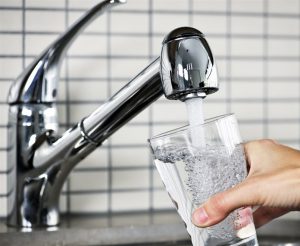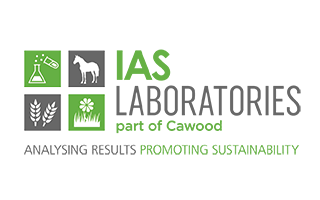5 ways to tell if your water is safe to drink
August 2022 – 5 Ways to tell if your water is safe to drink.
Do you have a private water supply? Then it’s your responsibility to ensure it is safe to drink.
As private sources are not regulated, local authorities leave testing drinking water quality in the hands of the homeowner. If it’s not suitable for consumption or there is an issue with your supply, you will not be informed. So, testing your water to identify any contamination is vital.
There are 5 ways to tell if your water is safe to drink, or whether you need to have it treated. Read on to find out about the dangers of bacteria and other contaminants in drinking water, an explanation of hard water, the tell-tale signs of contamination, and how IAS Laboratories can help.
Bacterial contamination and its dangers
The presence of bacteria in a water supply can be very dangerous. Some studies suggest that long term exposure to high levels of bacteria or contaminants can result in adverse health effects, such as gastrointestinal illnesses, nervous system or reproductive issues, and chronic diseases.
Clean water is also important for public as well as individual health, whether it is used for drinking, food production, domestic use, or recreational purposes. Contaminated water can transmit diseases such as diarrhoea, dysentery, typhoid, and polio. In fact, 829,000 diarrhoeal deaths happen each year worldwide due to unsafe drinking water or poor sanitation.
Total coliforms and E. coli originate from human and animal waste. They enter the water system through cracks in well casings, improper well constructions or locations, or directly from areas of waste like sewage leach beds and septic systems.
The potential presence of such dangerous organisms is why it is important for you or the local health authority to test water systems on a regular basis. If they are found, corrections must be made, and the source of contamination must be determined to avoid issues remerging.
As well as bacteria, domestic well water can contain other contaminants. These may be less harmful to human health, but are every bit as harmful to your house.
5 ways to tell if your drinking water is contaminated
As you can see, preventing contamination of drinking water sources is vital in preventing adverse health effects and damage to your home. Here are some ways to tell if your drinking water is contaminated:
#1: Metallic taste
Does your water taste metallic? Odd tastes and odours in water are often caused by the presence of underground organic chemicals, naturally occurring decomposition like humic matter, or even rubber components or new or modified plumbing.
However, problems of this nature are often difficult to trace to a specific source. Any water with a “chemical” or metallic taste or smell should be tested for the presence of industrial chemicals, herbicides, or waste. This type of contamination can lead to potential health consequences if ingested continuously over time, including anaemia, hypertension, convulsions, diarrhoea, liver damage, and kidney disease.
#2: Brown/red stains
Brown, red, orange, and/or black stains found on plumbing fixtures, laundry, and anything else the water touches can be a sign of high levels of iron or manganese compounds. They are common in rocks and soil and are easily leached into the water supply after coming into contact with groundwater, particularly acidic water.
High levels of Iron and manganese can damage pipe work, pumps, appliances, and equipment within your home.
These water constituents are measured by quality water testing and are quantified in milligrams per litre (mg/l). Serious damage to the entire water system may result if these compounds exceed EU guidelines.
#3: Rotten egg smell
Does your water smell like rotten eggs? This is caused by the presence of hydrogen sulphide, which can permeate an entire home or building with its rank odour.
It is also extremely corrosive and can attack piping, tanks, water heater elements, and any metallic surfaces it comes into contact with. As it is present as a gas in water, it usually must be tested at the source. This is because it dissipates quickly when released from the water system.
#4: Blue/green stains
Blue/green stains on your bathroom sinks could mean that your water has a lower pH than required for clean, safe drinking water. The pH of pure water is considered to be a neutral 7. This acts as a reference point for testing acidity or alkalinity.
The varying pH of mains tap water and natural water from private sources is related to the levels of dissolved solids and gases in the water. Water with a pH of less than 6.5 is considered to be acidic. It is highly corrosive and can damage hot water tanks, pipes, household fittings, and plumbing fixtures, and is very likely to stain sanitary ware and fittings.
There are many areas in Ireland where pH is particularly low, resulting in the blue/green stains on sinks, drains, and pipework. In recent years, there have even been instances of hair (especially blonde hair) turning green. On investigation, it was found that this was a result of the water having a particularly low pH.
#5: Analysis
Whilst there are plenty of ways to recognise drinking water contamination, harmful bacteria or chemicals may be present without any obvious change. The only way to be sure is to undertake accurate, specialist drinking water analysis with an accredited laboratory. This value-added insight helps homeowners and local authorities diagnose issues accurately to rapidly correct any problems and safeguard public and individual health. There are many cheap home testing kits available to check your quality of water, but nothing beats a thorough laboratory analysis carried out by an INAB recognised laboratory.
Independent Analytical Supplies (IAS) provides a comprehensive water testing service, including supplying sampling kits, carrying out the analysis, and providing a full explanation of your results. We also offer advice on how to rectify any issues you may have relating to water quality.
We are an INAB accredited laboratory with over 35 years’ expertise in water quality testing. For more information, including how to take a sample, visit our website.
To order your test kit, visit https://iaslabs.ie/ias-labs-tests/, or call 059 9721022.

